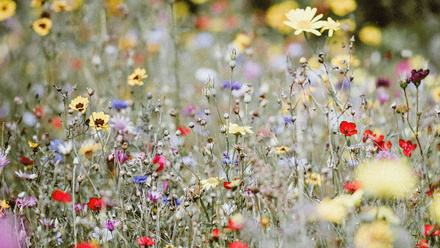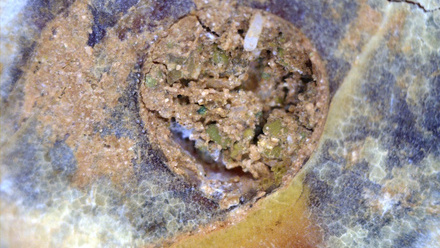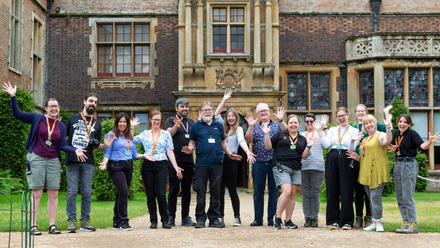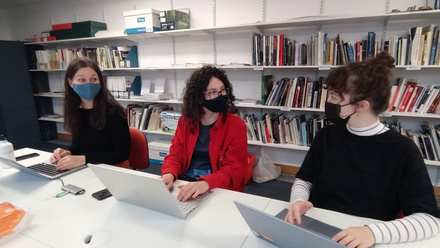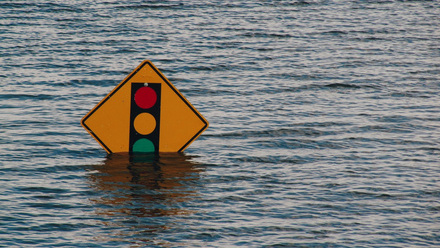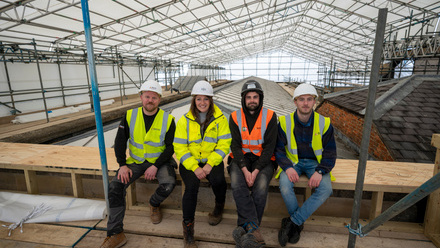Last year, just as the first lockdown was beginning, I shared a virtual stage with Professor Katharine Hayhoe, Chief Scientist at The Nature Conservancy. We had both been invited to take part in Let’s Talk Climate Action – a panel debate deftly orchestrated by our colleagues at Historic Environment Scotland and expertly hosted by journalist Sally Magnusson. We discussed our experiences of finding effective ways of communicating the climate crisis and how we each use our areas of expertise to reach new audiences, hopefully changing hearts and minds along the way. So, amidst the extensive media coverage surrounding the launch of the latest IPCC report ahead of this year’s COP26 global climate summit in Glasgow I turned to Twitter [i] to get Professor Hayhoe’s take on the situation. Her brief commentary on the report concluded with this statement:
That’s why this new IPCC report is so blunt. Climate change isn’t just one more priority on our already over-crowded list. It is a threat multiplier that affects every single other priority already on it, from the air we breathe to the food we eat.
This is a stark message, but Katharine is an optimist rather than a doomsayer, so it’s also worth sharing this positive quote [ii] from her too:
Climate action isn’t a giant boulder sitting at the bottom of a steep hill with just a few hands on it. It’s already at the top of the hill, it’s already got millions of hands on it, and it’s already slowly rolling in the right direction. It just needs to go faster.
So what can Icon and its members do?
We already know that many conservation businesses and cultural heritage organisations are changing their practices to reduce their carbon footprints and to introduce mitigation and adaptation measures to counter the impact that climate change is having on the objects, collections, and buildings that they care for. Icon is also taking practical action, for example promoting a digital-only option for Icon News and the Journal of Conservation (while switching to paper envelopes for those who still want to receive hard copies), moving to a more energy efficient office building, and reducing our staff travel.
We have also teamed up with Fit for the Future to help share our members’ knowledge and ideas with others in the wider heritage and charitable sector. We’re part of the COP26 Task and Finish Group set up by the Historic Environment Forum too, and we recently participated in a roundtable convened by DCMS to gather ideas about sustainability policies that can be fed into the forthcoming Government Heritage Statement.
On the global stage we continue to play a role in the international Climate Heritage Network, including taking part in the recent G20 Italia 2021 webinar series: Preserving Cultural Heritage, Supporting the Green Transition developed by the Italian Cultural Ministry.
However, the most exciting recent development has been the launch last year of Icon’s Environmental Sustainability Network (Icon ESN), chaired by trustee Lorraine Finch ACR. This new network already has 270 members and delivered a busy programme of events in its first year. The network is actively contributing to the implementation of Icon’s Environmental Action Plan and is therefore playing a full role in helping to deliver our strategic priorities.
If Icon members haven’t already signed up as a member of Icon ESN, then I urge you to do so!
So, in a year that has brought many challenges, Icon ESN has been an encouraging and uplifting success story but, in addition to the professional impact that the network is delivering through its events, I think that it also offers an insight into a new way of working as we consider our next Strategy and its implementation.
Refections on the launch of the Environmental Sustainability Network
Lorraine Finch ACR, ESN Chair
In the one year that the Icon Environmental Sustainability Network has been active, I've had the pleasure of seeing many of you at our events. It's been really great to have spoken to so many of you and to listen to your thoughts on environmental sustainability in cultural heritage. A theme that has come up again and again, is the feeling of powerlessness. Many of you feel that they are unable to affect change in your workplace, whether you are employed or self-employed.
You have the power to create change. Every small change that you make, makes a difference. You might feel that your decision to turn off the lights in your studio and work by natural light won't help but if ten, one hundreed, or one thousand other people who are reading this follow suit, that makes a difference.
What one thing can you do today to make a difference? For a few suggestions visit the Count Us In website where you will find Making Change that Matters – the 16 steps that are the most effective way to reduce your carbon pollution and persuade others to do the same. Even though these steps are not written for the cultural heritage sector, with a bit of creativity you can adapt them:
- Fly less? Can you get a train to the meeting or attend online?
- Drive electric? Use a taxi firm that has an all-electric feet.
And we can all do the speaking up.
Speaking up is so incredibly important. You might feel that you are only one person in your work place, and have a limited ability to affect change at a higher level but coming together with colleagues or other freelancers will create change on a bigger scale. The changes you make will be noticed. They will cause others to think about environmental sustainability and to make changes themselves. If you don't do anything and never speak up, how will change for the better ever happen? Research into the effectiveness of nonviolent protest shows that once 3.5% of the population participate success is inevitable.
So speak up, walk to work, stop using single use plastics in your studio, green your money and switch off the lights!
You have the power. You are the power.
[ii] In the Face of Climate Change, We Must Act so that We Can Feel Hopeful - Not the Other Way Around. Katharine Hayhoe. 12 August 2021

